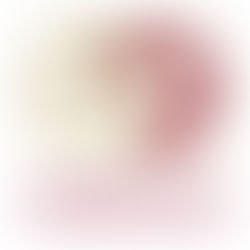Searching for the right celadon glaze: part 2
So, now I'm on the search for a decent fake celadon glaze which will give the same look but won't require firing in a gas kiln.
Initially I decided to adjust my recipe for a clear gloss s/w glaze by adding 1%, 2% and 3% copper oxide. I am rather pleased with the 1% addition which gives me a nice pale turquoise glaze. This is really not far off from what I want.

But I cannot wait how this glaze performs on actual pots that are not just flat tiles.


These two pots are made from PF700G clay, which fires very white, and were glazed with the C1 +1% cobalt oxide s\w glaze. The little wheel-thrown jug was covered quite thickly. The glaze has pooled very nicely in the recesses of the carvings without running off. The pinch pot combines shellac resist technique and white underglaze decorations. It has potential but the glaze application was too uneven.
Next I tried to mix some more glazes to see what I can get. Some of the recipes I'm using have come of the Glazy website (BCT = Burke Celadon Turquoise and BSC = Burke's Strong Celadon) or from Yoko Sekino-Bové's website yokosekinobove.com (E1 = 85/15 Turquoise and F1 = Fake old Chinese celadon).

However, I was far too impatient to wait for the test tiles I need using the correct clay so I used some I'd made earlier from reclaimed uni clay. This only gives me a very rough approximation of what to expect on a much whiter clay body. Also, I really made a pig's ear when measuring the ingredients for the BCT glaze thus the amounts of copper carbonate added came out a 0.7%, 1.16% and 1.96%. You really need to have your wits about you when mixing and recording test glazes.

These are my next batch of test tiles before going into the electric kiln. I am testing eleven different glazes or glaze variations on two different clays: PF700G - a grogged white stoneware porcelain and PF520 Ashraf Hanna. It is interesting that even before firing one can see variations in the glaze colour.

Below are the tiles after being fired in oxidation to ca 1270°c.

Because of the yellowish clay body colour of the test tiles in rows 2 and 4 the glazes are more greenish. As expected, the cobalt blue is very, very strong and has nearly cancelled out the cobalt oxide. One needs larger batches than 50g to try out a better balance.
Next I'm trying out a combination of a Parian s/w glaze on the inside combined with different celadons over white design liners on PF700G. I want to compare the three celadon glazes which were the most similar, i.e. BSC 1% copper carbonate, E1 1% copper oxide and BCT 2% copper carbonate. Also, I thought I wouldn't mind how the C1 1% copper oxide 0.25% cobalt oxide would sit on a pot.

So, this is the result of the fired pots out of the electric kiln firing:

It is difficult to see but I like the Parian glaze which is the glaze I used on the inside of each pot. It is very close in colour to the clay body and has a lovely velvety finish. As it is a store-bought glaze I'll need to see where it was from or find a glaze that I can mix and that performs similarly.
I have tried different forms of glaze application with the celadons: dipping, pouring and brushing on. Some of the glazes are more forgiving than others, which would benefit from spraying it on to guarantee an even colour coverage.
Generally, the celadon glaze is very pale where it is thin but allows the white design liner to come through.

I turned the pot on its head and poured the glaze over it. This accounts for the drips on the outside. This method leaves much heavier drips around the rim and indentations with less glaze where it sits on the rack. So I added more celadon glaze to the rim encouraging drips running also down the inside of the pot. I find these drips distracting on the outside and a bit sloppy on the inside.
Looking at the thicker application of the glaze on the foot of the pot I like the colour and noticed that there were no cracks within the glaze. Maybe I could try to mix this glaze with a higher copper carbonate ratio and spay it.


As predicted, the blue is too blue for my liking and really needs a more even application to work. I dipped the bottom turquoise part and brushed on the blue glaze. However, I do like the subtle way the the design liner details just emerge out of the glaze. These glazes have a very fine crackle in them which is hardly visible.

The crackle is much stronger here and I really don't like the uneven colouring that is a result of brushing on the glaze. It is interesting that the celadon, where applied over the parian glaze at the neck of the pot, has changed it to a more green colour.

What these test have also shown me is that I don't really like the textured decorations at the bottom of these pots which were created by a shellac water resist method. The edges are not as crisp as they should be to compliment these graphic patterns. Also the glaze pools into the recesses and softening their appearance even further. This along with the exposed grog particles make them look messy. Thus, not what I want in combination with a celadon glaze. Good, that is one technique eliminated for this particular set of pots.

















